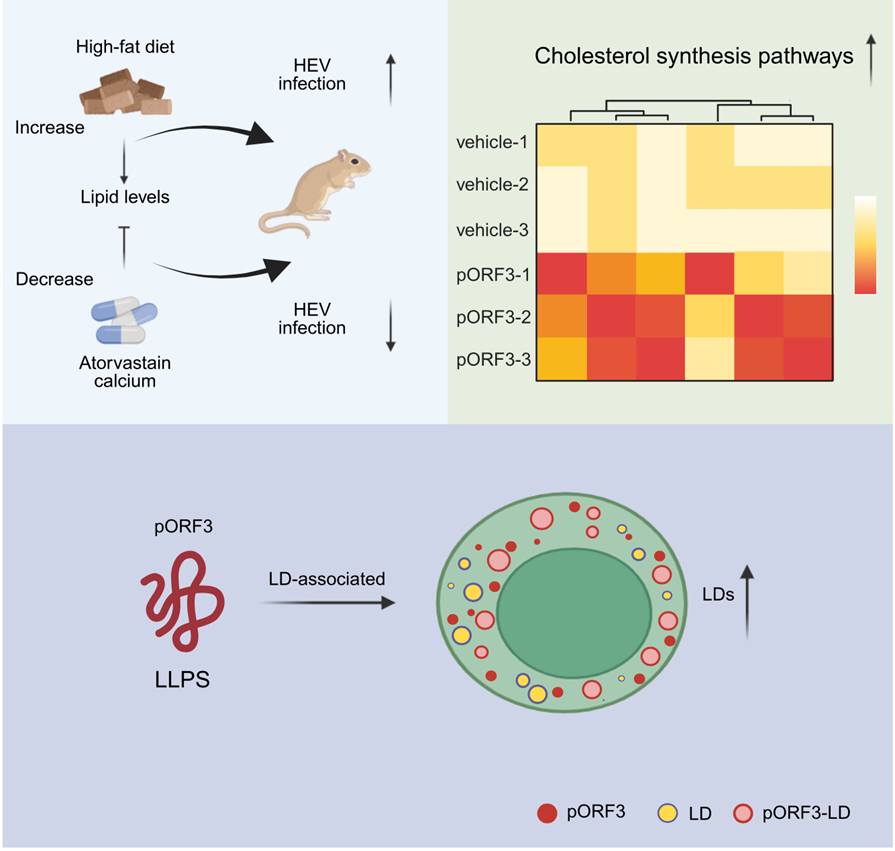Hepatitis E virus (HEV), a single-stranded positive-sense RNA pathogen, causes acute or chronic hepatitis and poses severe risks to pregnant individuals and immunocompromised populations. The viral genome contains three open reading frames (ORF1-3), among which pORF3 is critical in vivo HEV infection but with elusive mechanisms, probably participating in quasi-enveloped HEV (eHEV) assembly and release, host innate immunity antagonism, and cellular metabolism regulation. Lipid droplets (LDs), the dynamic organelles storing neutral lipids, are critical in host energy metabolism, membrane synthesis, and the life cycles of a few viruses. Nevertheless, the crosstalk between HEV infection, hepatic lipid metabolism, and LD biogenesis remains unclear.
A research team co-led by Dr. Yao-Wei Huang from the State Key Laboratory for Animal Disease Control and Prevention at South China Agricultural University and Dr. Pinglong Xu/Cunqi Ye/Tingbo Liang from Zhejiang University has recently addressed this intriguing question. HEV infection increases LD number and size in cellular and gerbil models, while high-fat diet-fed gerbils have higher viral loads. Interestingly, inhibiting cholesterol synthesis by atorvastatin or knocking out viral ORF3 significantly reduces LD content and viral infectivity. Furthermore, they found that viral pORF3 is essential for LD biogenesis in hepatocytes, which sustains LD levels to meet viral replication and egress demands.
Noticeably, the authors reveal that pORF3 undergoes the liquid-liquid phase separation (LLPS) via its intrinsically disordered region (IDR, amino acids 56-76) to form cellular condensates, which induce a unique pORF3-lipid structure to interact with the cholesterol synthesis pathway. This interaction upregulates the transcription of key genes in lipid metabolism and promotes the synthesis of LD components TAG and CE. These findings represent emerging evidence of viral protein-driven LD biogenesis via LLPS.
Therefore, this intriguing study uncovers a unique pORF3-LLPS-LD biogenesis axis critical in HEV infection, highlights an essential role of lipid metabolism in HEV host-pathogen interactions, and indicates that inhibiting LD biogenesis may serve as a novel HEV antiviral strategy. The identification of pORF3 condensates also provides new insights into the multifaceted roles of this elusive viral protein in HEV life cycle dynamics.
Read the full research article (Cell Reports. 2025 Oct 8; 44(10):116406): DOI: 10.1016/j.celrep.2025.116406

